Sheeting the main hard enough on an MC Scow in breeze can be taxing, especially over a day with multiple races. A 5:1 mainsheet purchase makes this easier compared to the 4:1 purchase found on many MCs. It also gives you slightly finer control over trim. The downsides are the need to ease further in puffs and the extra line to sheet in when rounding the leeward mark.
Melges can install either 5:1 or 4:1 on your new boat. Some sailors claim to have found the best of both worlds by making their system convertible.
We caught up with Will Demand and Mike Keenan, who each have convertible systems, with slightly different approaches. Mike is a mega-master. Will is young and strong, but still prefers the 5:1 in breeze. Here are Mike’s comments about the 5:1.
- Where did you get the idea? Hoover Sailing Club members
- What are the biggest advantages of the system? Much less effort in the shoulders, arms, and especially the forearms when trimming the sheet. Especially noticeable, huge difference, when sailing back-to-back races in heavy air.
- When do you use 4:1 vs. 5:1? Some sailors always use the 5:1. I go to 5:1 when I find myself consistently overpowered.
Mainsheet Purchase Configurations
Here are pictures of 4:1 and 5:1 mainsheet purchase systems.
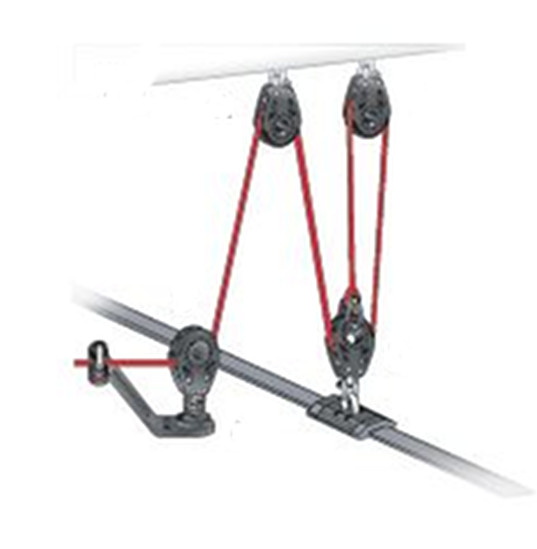
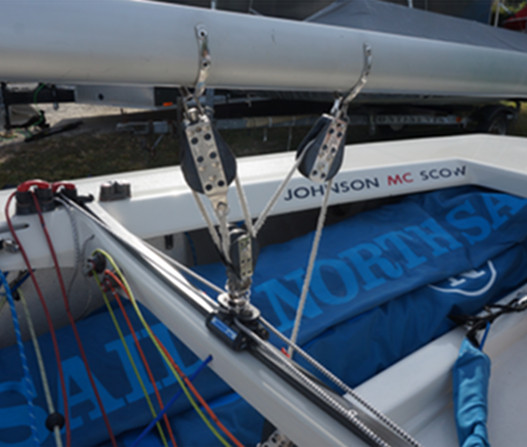
Convertible System
If you install a 5:1 system for heavy air, you can convert it to 4:1 for lighter conditions. Simply remove the end of the sheet line from the becket and terminate it at the double block. This eliminates one moveable part of the line.
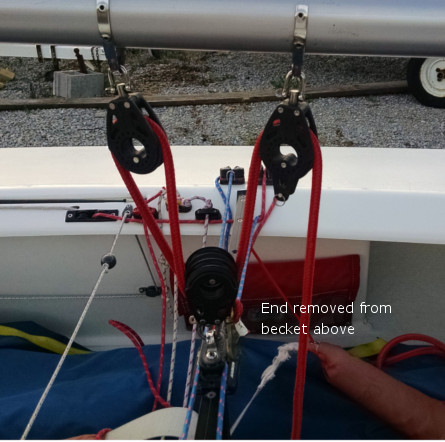
Mike Keenan, Hoover Sailing Club, uses a trigger snap to attach the mainsheet to the becket for 5:1. To convert to 4:1, he simply unsnaps the shackle. When unsnapped, the shackle prevents the sheet from pulling through the double block.
We were unable to find a source for the specific 1/2″ trigger snap Mike recommended. Trigger snaps similar to these at U.S. Rigging should be adequate, with a breaking strength of over 500 lbs. Mike also notes that he has placed the block with the becket on the forward end of the boom, rather than the aft end as shown in the photo.
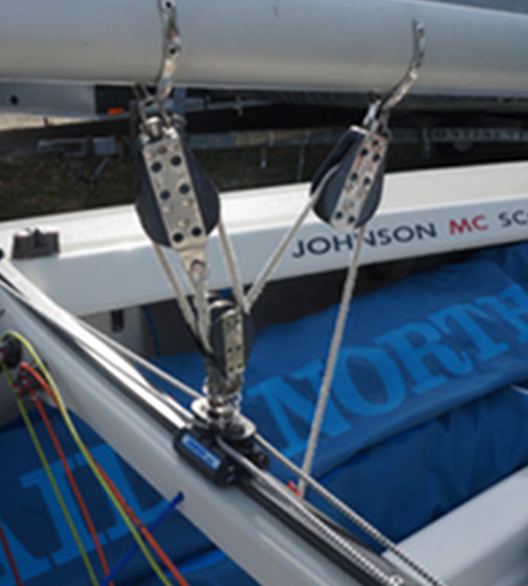
Will Demand, MC Fleet 105, has a loop in the end of the mainsheet that attaches to the becket for 5:1. To convert to 4:1, he removes the pin in the becket to release the loop and ties a bowline in the mainsheet to prevent it from pulling through the double block.
Parts and Sheet Length for 5:1 Purchase
To install a 5:1 purchase, replace the single block on the traveler with a 57 mm double block such as the Harken 2602. Move the single traveler block with becket (Harken 2601) to the forward position on the boom.
The typical length for a 4:1 mainsheet on the MC is 35′. For a 5:1 purchase you will need 41’6″ or 42′.
Calculating Mechanical Advantage
If you don’t know how to determine the mechanical advantage of pulley systems, look at Calculating MA by Counting the Lines, which shows an easy method for both simple and compound systems. It also has a short quiz to check your understanding.



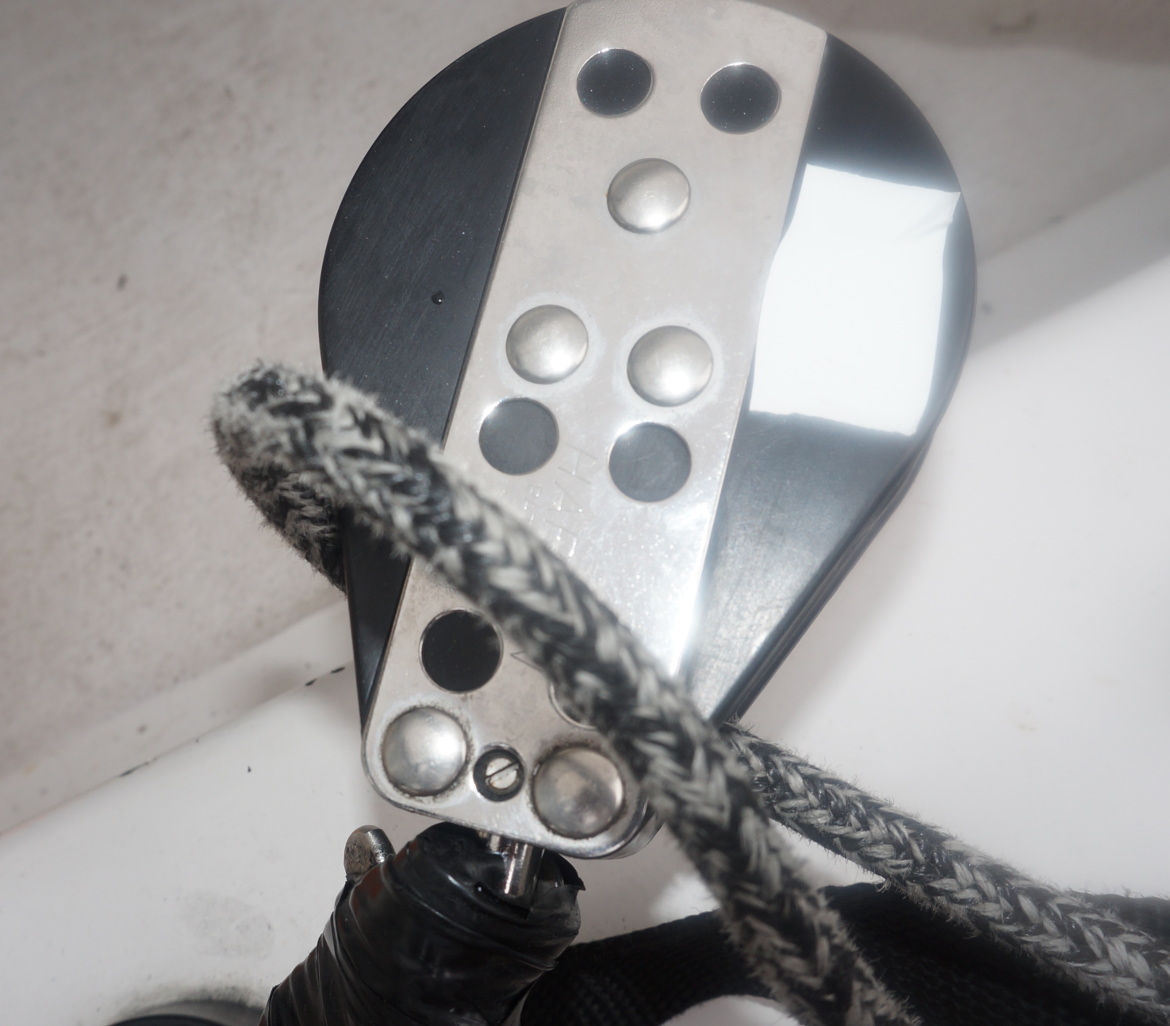
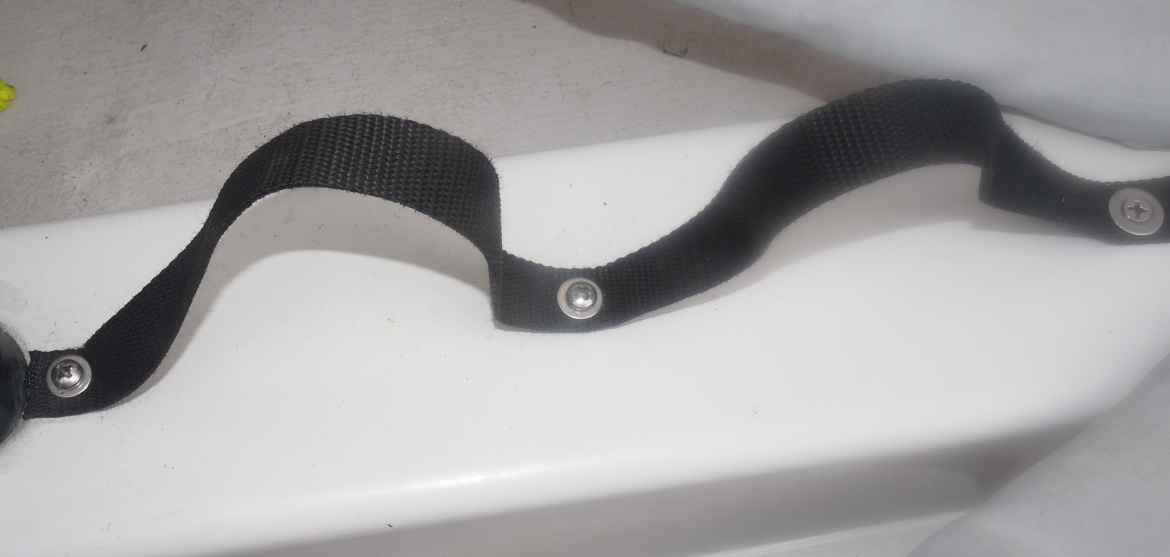

What is the suggested length of the tapered segment of the mainsheet? Any recommended line type and size for tapered segment? Dyneema, Amsteel, for instance?
On the mainsheet I bought from Melges, the tapered part is 6′ long. This is sized for a 5:1 purchase in the mainsheet system, so you might only need a little less than 5′ for a 4:1 purchase.